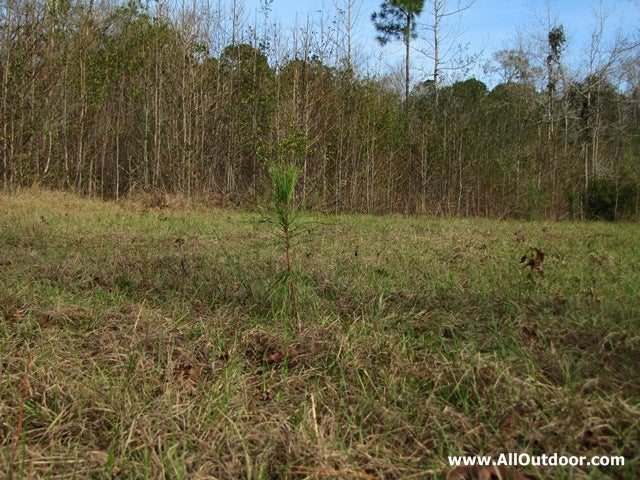Developing Sustainable Wildlife Habitat
Kevin Felts 01.09.17

So you want to set aside part of the farm for wildlife habitat?
Before we begin, I feel it is important to understand how forest and wildlife habitat have changed since the late 1800s and early 1900s. During that time, large areas of the southern United States were clearcut. This means just about all of the timber was cut down and sent to lumber mills.
The areas were replanted in pine trees. Then around 20 years later, the areas that had been replanted were clearcut again. Old growth forest that were a mix of oak and pine gave way to pine plantations, which are nothing but pine trees. Large areas of timber were also clear cut to make room for livestock.
So many long leaf pine trees were cut down, they are on the endangered list. In large areas across the southern part of the United States, there are no trees older than around 100 years.
What does all this mean?
If you buy land in a rural area, chances are timber on the land will be different than it was over 100 years ago.
Where to Get Started
- Local Cooperative Extension— also known as the county co-op. They are part of the U.S. Department of Agriculture. Their mission statement is, “advance agriculture, the environment, human health and well-being, and communities.” They should be able to point you in the right direction.
- Local College or University– they may have a division that deals with botany or forest ecology.
- Local timber company– they employee foresters who study forest ecology.
- Naturalists programs– sometimes sponsored by the county co-op office. For example, Texas has a Master Naturalist program.
Develop an understanding of what forests were like before being clear cut.
Big Picture
Different timber means different eco-systems. There may be too many of one type of tree, then not enough of another type.
If you wanted to attract wild turkeys to your land, what kind of pine tree would you plant?
Fox squirrels, cat squirrels and wild turkeys are at home in stands of old growth pine trees. The large seed of the long leaf pine is a food source for wild turkeys. When large areas of long leaf pines were clear cut, turkey populations took a nose dive.
Deer eat a wide range of food, such as weeds, acorns, berries and wild flowers. All of which can be planted in a wildlife habitat.
Plan for the Long Term
If you plant an oak tree today, depending on various conditions, it may take that oak tree 100 years to reach maximum acorn production.
Loblolly pine trees can grow up to two feet a year. Long leaf pines grow slow for the first decade, then they grow faster.
These are slow growing trees that will take decades to mature.
Where to Get Seeds
Towards the end of the year, oak trees drop their acorns and pine trees drop their seeds.
I drive around rural areas and look at the pine trees. For my restoration project I want pine trees that have a lot of limbs on them. Some pine trees drop their lower limbs, while some are full of limbs.
When I see a pine tree I like, I look around the base and collect the seeds. When pine cones open, the seeds will fall out and float on the wind with a little wing. Whatever direction the wind blows, look there for pine tree seeds.
Or, there are various websites that sell pine tree seeds and acorns.
Wildlife Habitat is a Labor of Love
While planting pine tree saplings on the property, I started thinking about how long they were going to take to grow. At 48 years old, I may not see the trees reach maturity, but maybe my kids and grandkids will.
What we do today sets the example for future generations. Maybe when I am gone, the kids will see the tress and think about how much their dad and grand-pa loved nature. Hopefully, I will set an example that will be passed down through the generations.